Meretseger: Theban Cobra Goddess Who Presided Over The Valley of The Kings
A. Sutherland - AncientPages.com - In Egyptian mythology, Meretseger presided over the Theban necropolis located on the west bank of the Nile, especially the Valley of the Kings and the Valley of the Queens.
Stela with priest Neferhor praying to Meretseger, Luxor, Deir el-Medina, New Kingdom, Dynasty 20, reign of Ramesses III, c. 1182-1151 BC, limestone - Oriental Institute Museum, University of ChicagoImage credit: Daderot - CC0 1.0
Meretseger was associated with one particular landmark among the desert hills, and it was the pyramid-shaped, natural mountain peak (420 m) in the Theban Hills, known as el Qurn ("The Horn").
From there, she looked over the region. She was sometimes called Dehenet-Imentet ('the peak of the West') after her dwelling place, clearly recognizable on the horizon. Interestingly, her mountain peak was believed to be one of the entrances to the underworld. However, her most popular name was Metseger ('she who loves silence'), and this name perfectly fitted her because she adored the desolate, quiet, and lonely place belonging to the deceased.
In the mythology of ancient Egypt, three important cobra goddesses ruled over three environments. One of them was Wadjet, who ruled over the marshes of Lower Egypt.
The second was the goddess Renenutet ("snake who nourishes"), a popular and benevolent deity of cornfields. The third one was Meretseger, who presided over a desert hill, but she was only sometimes compassionate.
 Meretseger on an ostracon. Egyptian Museum, Cairo. Image credit: Djehouty - CC BY-SA 4.0
Meretseger on an ostracon. Egyptian Museum, Cairo. Image credit: Djehouty - CC BY-SA 4.0
The necropolis' artisans and other workers who worked in the Valley of the Kings were aware of the goddess's constant presence. As they knew she was watching their hard work, they frequently "needed to appease Meretseger before they could work safely in her domain. One describes Meretseger as striking like a lion when angry but coming like a sweet breeze when she is appeased. Snakes were said to sleep below the earth like the dead every night and come alive again by day." 1.
In the village, several unearthed stelae were dedicated to Meretseger, and some made emotional and desperate requests for the goddess's forgiveness.
The artisans from the Valley of the Kings revered several deities such as Ptah, Osiris, Hathor, and kings and queens. However, Meretseger was always remembered by her worshipers. The snake, a source of danger and evil, held people in constant fear, and this goddess could avert the threat from these deadly creatures or cure them if necessary.
Being harsh with people, Meretseger was believed to strike those guilty of crimes or other evil deeds (like stealing something from the royal graves) with loss of sight or punished them with the help of dangerous bites and poisonous stings.
 Meretseger/Al-Qurn - The natural pyramid over the valley of the kings, Luxor, West Bank. Image credit: Steve F-E-Cameron (Merlin-UK) - CC BY-SA 3.0
Meretseger/Al-Qurn - The natural pyramid over the valley of the kings, Luxor, West Bank. Image credit: Steve F-E-Cameron (Merlin-UK) - CC BY-SA 3.0
Ancient Egyptians believed they could save themselves from all evil creatures by venerating the scorpion goddess. Ancient Egyptian goddess Serket had power over snakes and scorpions and their poisonous and deadly bites. Thus, she could heal from fatal bites of snakes and scorpions and, another time, punish evildoers.
Several stelae were discovered in Deir el-Medina, the home to artisans and craftsmen, and these artworks attest to the goddess's forgiveness and the recovery of workers. Meretseger was, first of all, worshiped by the artisans and other workers who built and decorated the tombs of the Egyptian royals in the Valley of the Kings during the 18th to 20th Dynasties of the New Kingdom of Egypt (ca. 1550–1080 BC).
The ancient Egyptians believed that "snake-headed demons and fire-spitting snakes punish evil souls.
The visions of the underworld painted on the walls of the royal tombs were all associated with snakes. Each of the twelve underworld gates has a snake guardian, and the solar barque and the corpse of Osiris were protected by the coils of the mehen snake, a kind of counter - Apophis.
Stele Nakhtimen from Deir el-Medina, praying Meretseger the snake-goddess. Credit: Marie-Lan Nguyen - CC-BY 2.5
Time itself was depicted as an endless snake that swallows up the hours. One of these images, the "Ouroboros" or "tail-in-mouth" serpent, passed into other cultures as a symbol of infinity." 1
Usually, Meretseger was depicted as a coiled serpent, a cobra with a woman's head, a snake-headed woman, or with attributes like a modius with uraeus, a disk with horns. Both serpents and scorpions were among creatures that inhabited remote desert-like places, and as such, they were, no doubt, perfectly fitting symbols of this deity.
Meretseger's cult is first dated to the New Kingdom (1550–1070 BC) but not later when the Theban necropolis ceased to be used for royal tombs.
Written by – A. Sutherland - AncientPages.com Senior Staff Writer
Updated on February 20, 2024
Copyright © AncientPages.com All rights reserved. This material may not be published, broadcast, rewritten or redistributed in whole or part without the express written permission of AncientPages.com
Expand for referencesReferences:
Pinch G., Handbook of Egyptian Mythology
Hart, G. A Dictionary of Egyptian Gods and Goddesses
More From Ancient Pages
-
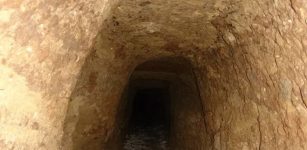 Huge 40-Meter Long 16th Century Tunnel For Looting Was Exposed Inside Tower Tomb
Archaeology | Jul 15, 2019
Huge 40-Meter Long 16th Century Tunnel For Looting Was Exposed Inside Tower Tomb
Archaeology | Jul 15, 2019 -
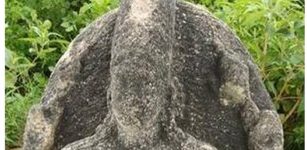 8th Century Sculpture Of Lord Vishnu Belonging To Pandya Dynasty – Unearthed
Archaeology | Sep 16, 2020
8th Century Sculpture Of Lord Vishnu Belonging To Pandya Dynasty – Unearthed
Archaeology | Sep 16, 2020 -
 Massive trophy skull rack discovered in the Aztec ruins
Artifacts | Aug 22, 2015
Massive trophy skull rack discovered in the Aztec ruins
Artifacts | Aug 22, 2015 -
 Mystery Of An ‘Impossible’ Event In Georgia Linked To An Unusual Woman
Featured Stories | May 15, 2024
Mystery Of An ‘Impossible’ Event In Georgia Linked To An Unusual Woman
Featured Stories | May 15, 2024 -
 Little People: Ancient Race That Pre-Dates Native Americans, Celts, And Other Settlers Worldwide
Featured Stories | Aug 29, 2024
Little People: Ancient Race That Pre-Dates Native Americans, Celts, And Other Settlers Worldwide
Featured Stories | Aug 29, 2024 -
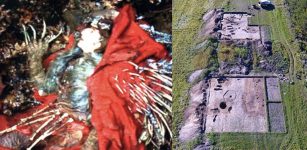 The Birdman Of Siberia: Sensational Finds In The Heart Of Russia Puzzle Scientists
Archaeology | May 31, 2019
The Birdman Of Siberia: Sensational Finds In The Heart Of Russia Puzzle Scientists
Archaeology | May 31, 2019 -
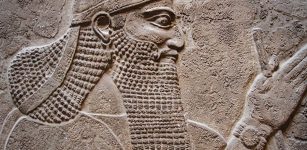 Unexpected Discovery Of 600 B.C Assyrian Palace In Shrine Destroyed By Isil Militants
Archaeology | Mar 2, 2017
Unexpected Discovery Of 600 B.C Assyrian Palace In Shrine Destroyed By Isil Militants
Archaeology | Mar 2, 2017 -
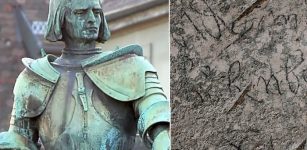 A Graffiti Inscription With The Name Of Knight Adrian von Bubenberg – Found On Mount Zion In Jerusalem
Archaeology | Nov 30, 2022
A Graffiti Inscription With The Name Of Knight Adrian von Bubenberg – Found On Mount Zion In Jerusalem
Archaeology | Nov 30, 2022 -
 Asgard: Enter The Ancient Kingdom Of The Powerful Norse Gods
Featured Stories | Aug 7, 2016
Asgard: Enter The Ancient Kingdom Of The Powerful Norse Gods
Featured Stories | Aug 7, 2016 -
 On This Day In History: Howard Carter Discovered King Tut’s Tomb In The Valley Of The Kings – On Nov 4, 1922
News | Nov 4, 2016
On This Day In History: Howard Carter Discovered King Tut’s Tomb In The Valley Of The Kings – On Nov 4, 1922
News | Nov 4, 2016 -
 How Did A Major Cooling Event 8,200 Years Ago Affect Hunter-Gatherers?
Archaeology | Jan 28, 2022
How Did A Major Cooling Event 8,200 Years Ago Affect Hunter-Gatherers?
Archaeology | Jan 28, 2022 -
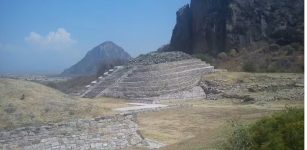 What Can Monument 9 Reveal About The Mysterious Olmec Civilization?
Featured Stories | Jun 30, 2023
What Can Monument 9 Reveal About The Mysterious Olmec Civilization?
Featured Stories | Jun 30, 2023 -
 Lost City Of Alexander The Great Found After 2,000 Years In Iraq
Archaeology | Oct 1, 2017
Lost City Of Alexander The Great Found After 2,000 Years In Iraq
Archaeology | Oct 1, 2017 -
 Maize-Based Diet Of Ancient Maya, Vulnerability To Drought And Collapse Of Society
Archaeology | Jul 8, 2019
Maize-Based Diet Of Ancient Maya, Vulnerability To Drought And Collapse Of Society
Archaeology | Jul 8, 2019 -
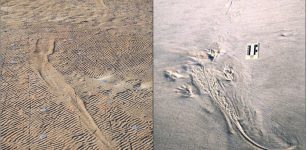 Ancient Giant Amphibians Swam Like Crocodiles 250 Million Years Ago – New Study
Archaeology | Mar 31, 2023
Ancient Giant Amphibians Swam Like Crocodiles 250 Million Years Ago – New Study
Archaeology | Mar 31, 2023 -
 Surprisingly Complex History Of Crocodiles – New Study
Evolution | Nov 23, 2023
Surprisingly Complex History Of Crocodiles – New Study
Evolution | Nov 23, 2023 -
 Unusual Skeletons And Mysterious Ancient Artifacts Covered With Unknown Characters Discovered In West Virginia By Archaeologists
Featured Stories | Feb 22, 2024
Unusual Skeletons And Mysterious Ancient Artifacts Covered With Unknown Characters Discovered In West Virginia By Archaeologists
Featured Stories | Feb 22, 2024 -
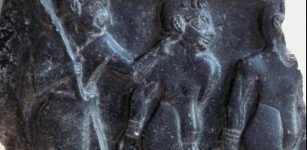 First Sumerian Revolt – People Oppose The Harsh Akkadian Empire
Featured Stories | Apr 14, 2023
First Sumerian Revolt – People Oppose The Harsh Akkadian Empire
Featured Stories | Apr 14, 2023 -
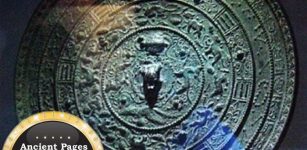 Mystery Of Ancient “Magical” Mirrors – Some Of The Strangest Objects In The World
Ancient Mysteries | Apr 21, 2011
Mystery Of Ancient “Magical” Mirrors – Some Of The Strangest Objects In The World
Ancient Mysteries | Apr 21, 2011 -
 Ancient Secrets Of Karelia: Mysterious Vottovaara Mountain Was Sacred To The Sami People
Featured Stories | Apr 5, 2017
Ancient Secrets Of Karelia: Mysterious Vottovaara Mountain Was Sacred To The Sami People
Featured Stories | Apr 5, 2017



